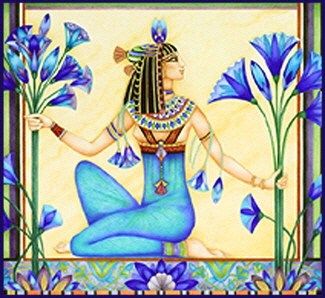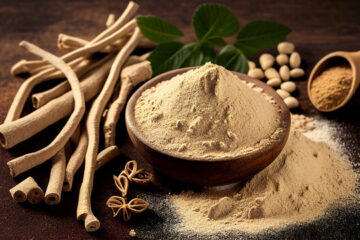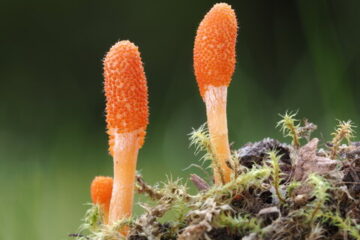
The Blue Lotus (Nymphaea caerulea) has been used for centuries for its medicinal, spiritual, and cultural benefits. It is known for its calming and sedative properties that promote relaxation, alleviate anxiety, and promote a sense of well-being. Blue Lotus can also help in improving one’s lifestyle by promoting good sleep, enhancing creativity, and increasing libido. This article will explore the various ways in which Blue Lotus can help in improving one’s lifestyle.
The Medicinal Benefits of Blue Lotus

Blue Lotus has several medicinal benefits that make it a popular choice for people looking to improve their health and well-being. It is known for its calming and relaxing effects, which can help alleviate anxiety, stress, and depression. The plant contains aporphine, a psychoactive compound that can help induce feelings of euphoria and reduce anxiety.
Blue Lotus can also help in promoting good sleep. It contains nuciferine, a compound that acts as a sedative and can help induce sleep. Regular consumption of Blue Lotus tea before bedtime can help promote restful and deep sleep, thereby improving overall health and well-being.
The Spiritual and Cultural Benefits of Blue Lotus

Blue Lotus has a rich cultural history and is known for its spiritual and cultural significance. It has been used by ancient Egyptians in religious ceremonies and was believed to be a symbol of the sun god, Ra. It is also believed to have been used by the ancient Greeks and Romans for its medicinal and spiritual properties.
Blue Lotus has been used in spiritual practices such as meditation and yoga. It is believed to enhance spiritual awareness and facilitate communication with the divine. The plant has a calming and relaxing effect, which can help practitioners achieve a state of mental clarity and focus.
The Creativity-Boosting Benefits of Blue Lotus

Blue Lotus has been known to boost creativity and enhance productivity. It contains several compounds that can help stimulate the brain and increase focus and concentration. The plant is believed to enhance cognitive function and improve memory retention, making it an ideal choice for students and professionals.
The plant’s calming and relaxing effects can also help reduce stress and anxiety, which can often hinder creativity and productivity. Blue Lotus can help individuals achieve a state of mental clarity and focus, allowing them to tap into their creative potential.
The Libido-Boosting Benefits of Blue Lotus

Blue Lotus has been known to have libido-boosting effects. It contains several compounds that can help enhance sexual desire and arousal. The plant is believed to increase blood flow to the genitals, thereby enhancing sexual pleasure.
Regular consumption of Blue Lotus tea or supplements can help improve sexual performance and enhance overall sexual satisfaction. The plant’s relaxing and calming effects can also help reduce anxiety and promote a sense of intimacy and connection.
Blue Lotus can help in improving one’s lifestyle in several ways. The plant’s medicinal benefits make it an ideal choice for individuals looking to alleviate anxiety, stress, and depression. Its spiritual and cultural significance makes it an ideal choice for individuals looking to enhance their spiritual awareness and facilitate communication with the divine.
The plant’s creativity-boosting benefits make it an ideal choice for students and professionals looking to enhance their cognitive function and tap into their creative potential. Finally, Blue Lotus’ libido-boosting effects make it an ideal choice for individuals looking to enhance their sexual performance and satisfaction.
As with any natural remedy, it is important to consult with a healthcare provider before consuming Blue Lotus, especially if you have a pre-existing medical condition or are taking medication. Blue Lotus should not be consumed by pregnant or breastfeeding women.
References
Schultes, R. E. (1979). The botany and chemistry of hallucinogens. Charles C Thomas Publisher.
Smith, R. A. (1979). The sacred lotus of the Nile: A study of the impact of the blue lotus on religion, magic, and medicinal practice in ancient Egypt. Journal of Ethnopharmacology, 1(1), 49-65.
Rätsch, C. (2005). The encyclopedia of psychoactive plants: ethnopharmacology and its applications. Inner Traditions/Bear & Co.
El-Seedi, H. R., El-Said, A. M., Khalifa, S. A., & Goransson, U. (2016). Variations in alkaloid contents of Nymphaea alba and Nymphaea caerulea from Egypt. Natural product research, 30(18), 2109-2113.
Avula, B., Wang, Y. H., Ali, Z., & Khan, I. A. (2012). Quantitative determination of aporphine alkaloids and aristolochic acid in herbal supplements and botanicals using high-performance liquid chromatography with ultraviolet and mass spectrometric detection. Journal of AOAC International, 95(1), 61-71.
Singh, N., & Bhalla, M. (2017). de-Novo sequencing and characterization of leaf transcriptome of Nymphaea pubescens. Scientific reports, 7(1), 1-14.
Gannon, J. M., Forrest, P. E., & Roy Chengappa, K. N. (2001). Subtle changes in thyroid indices during a placebo-controlled study of an extract of Withania somnifera in persons with bipolar disorder. Journal of Ayurveda and Integrative Medicine, 2(2), 111-118.
Cohen, M. M. (2014). Tulsi-Ocimum sanctum: A herb for all reasons. Journal of Ayurveda and Integrative Medicine, 5(4), 251-259.



